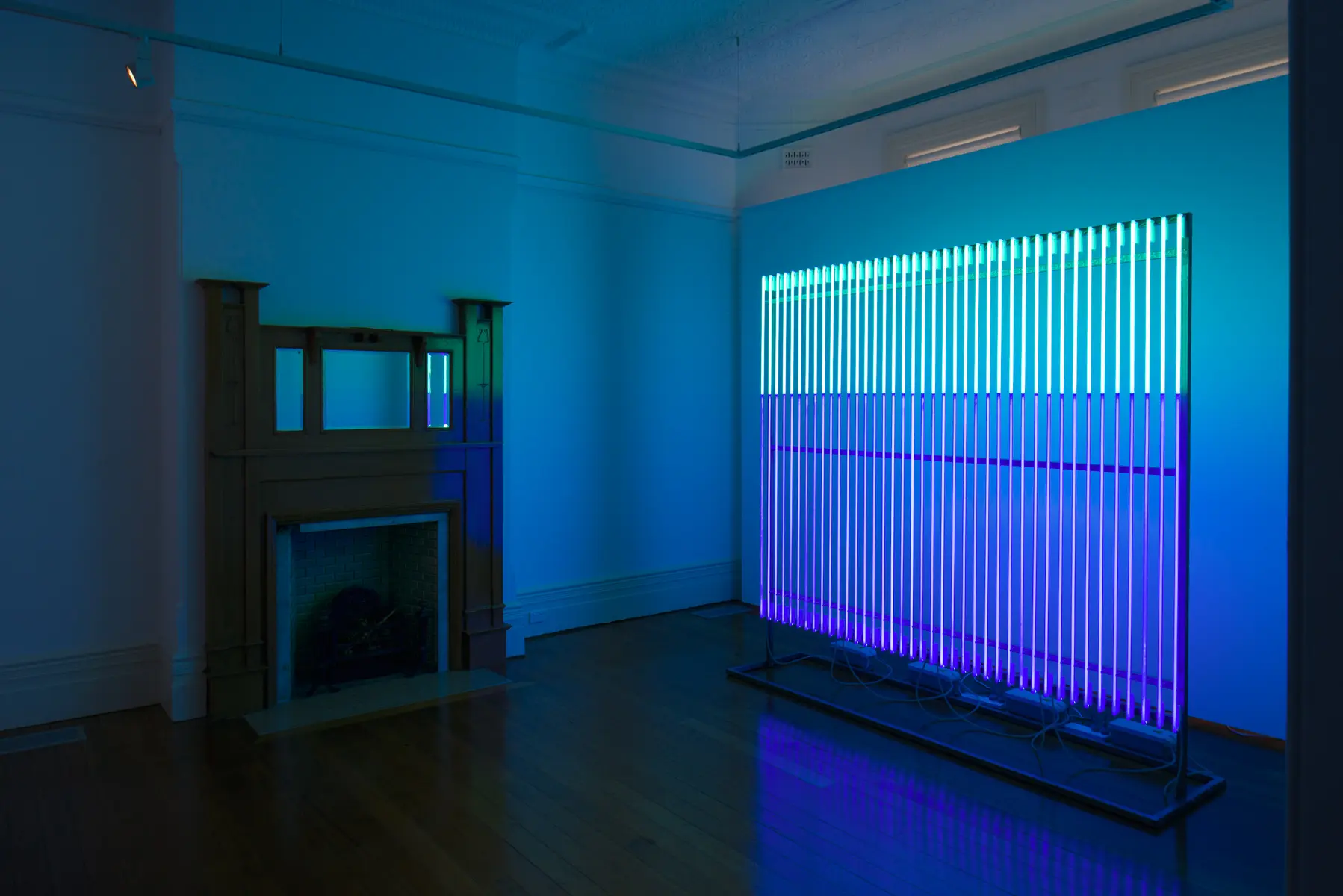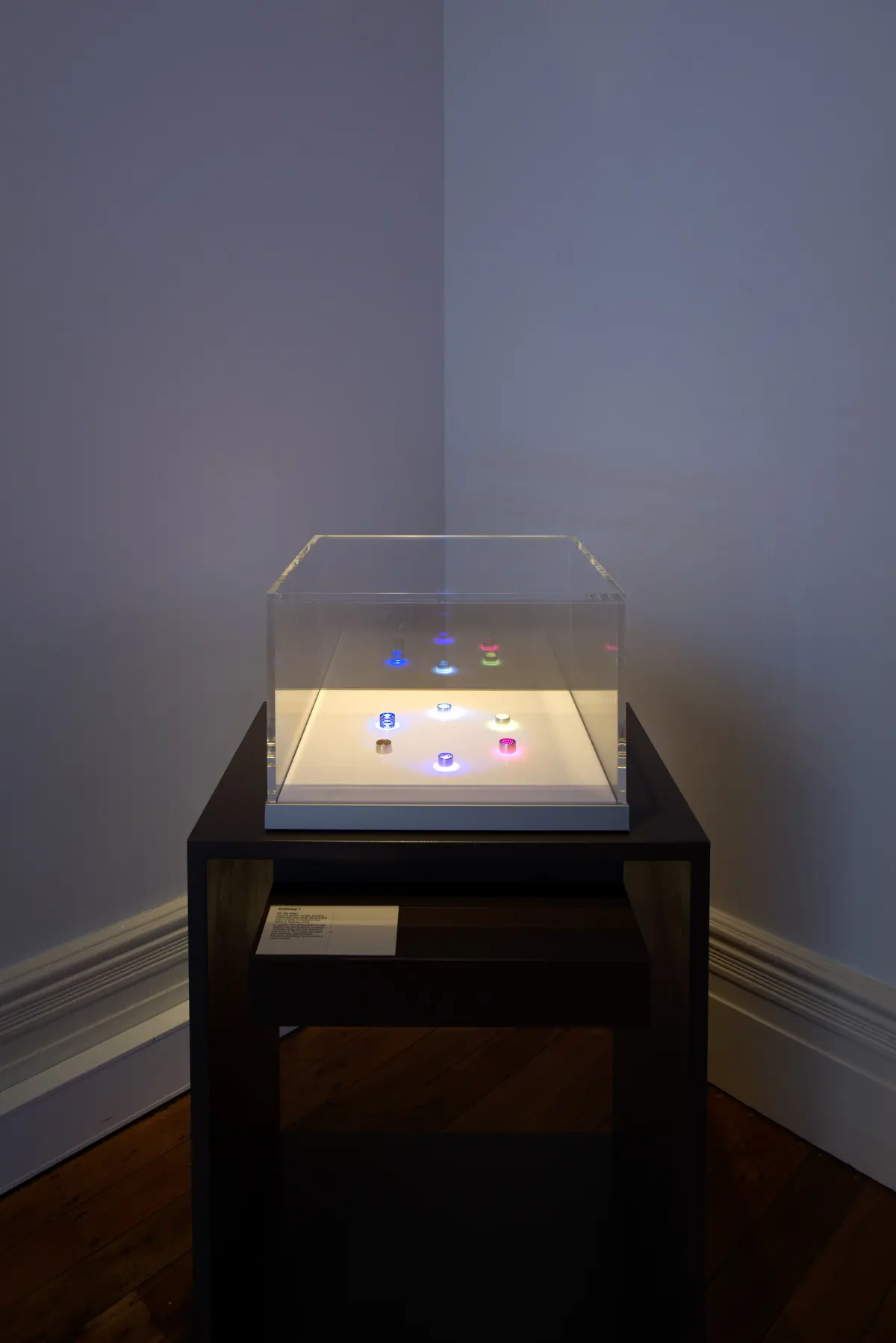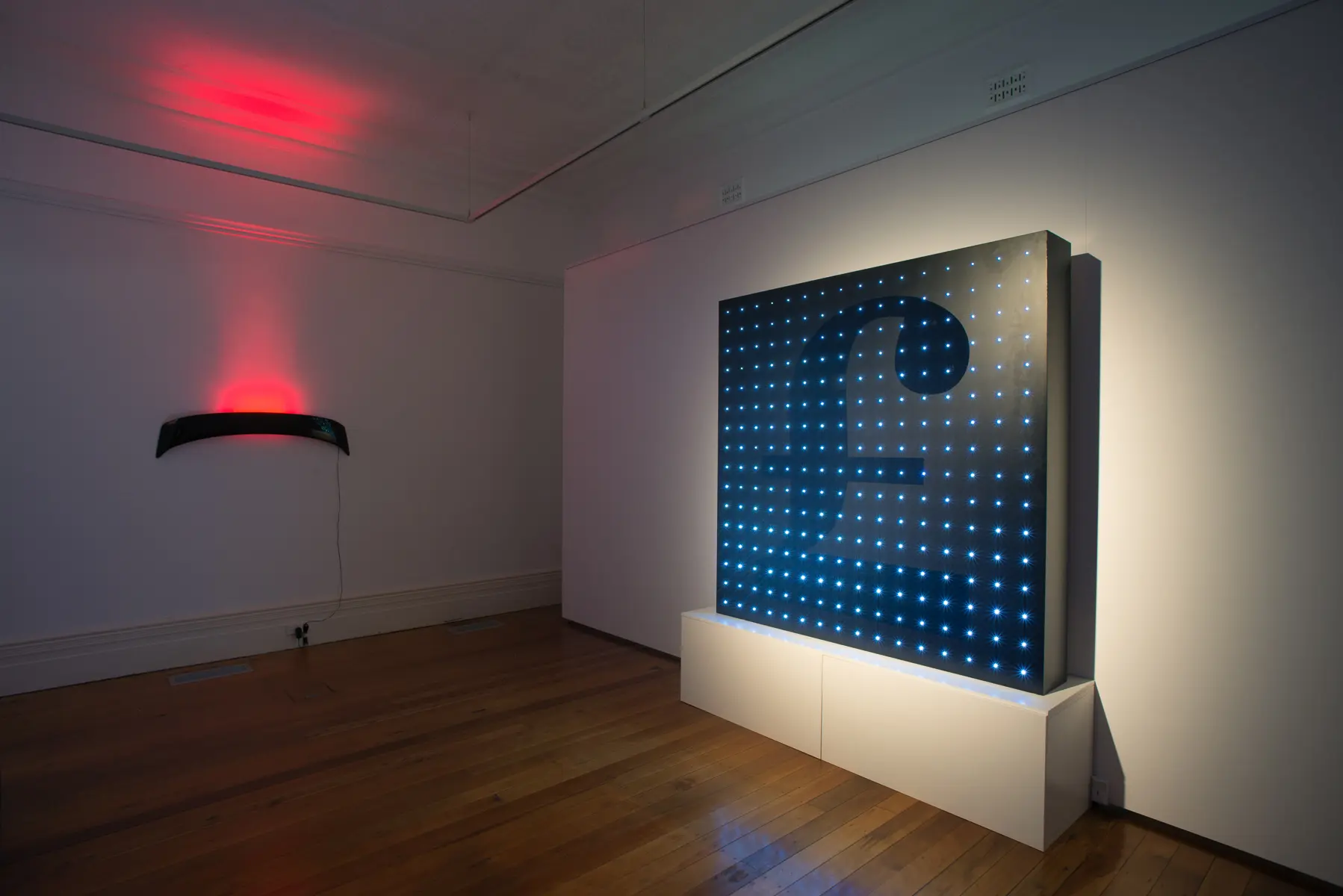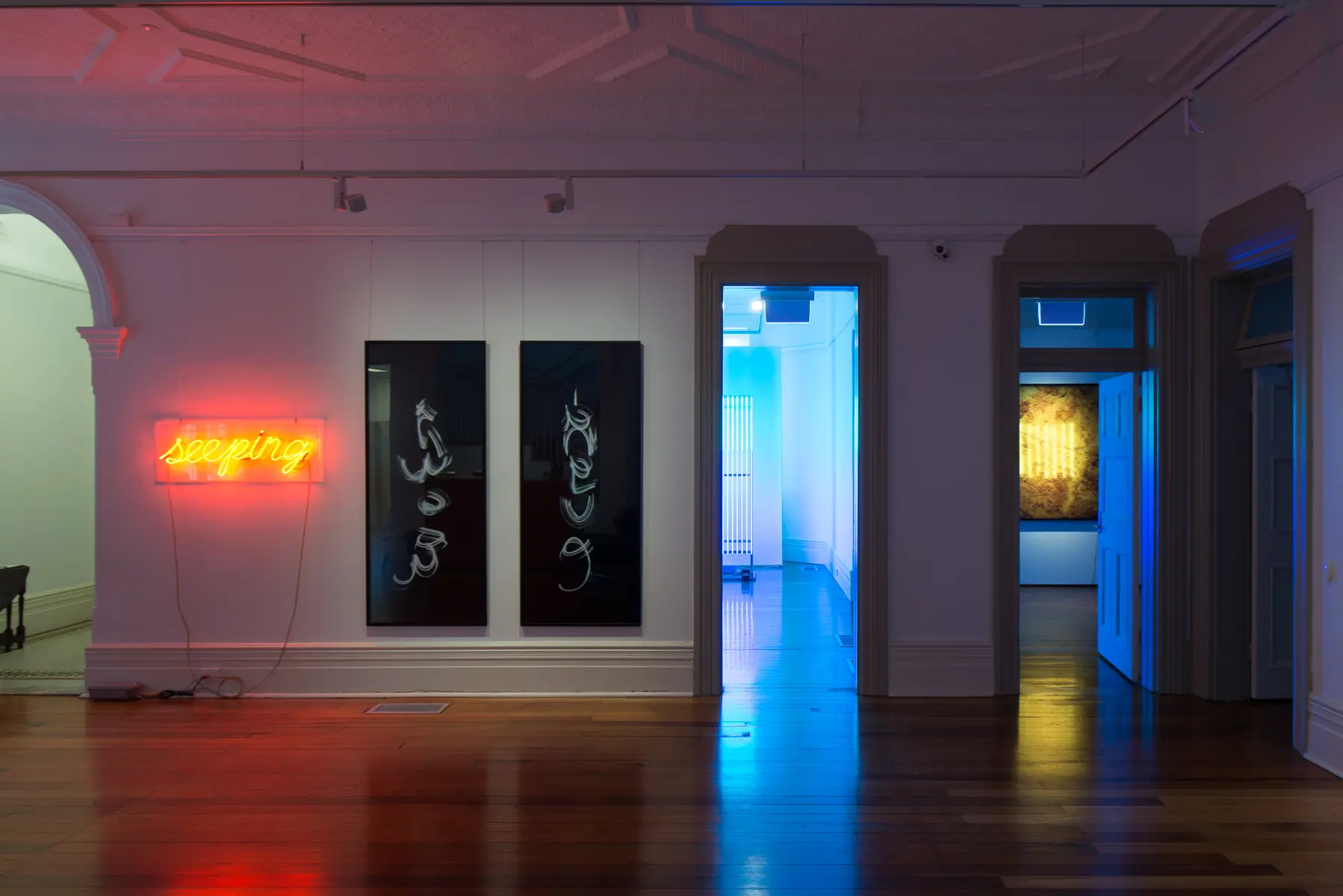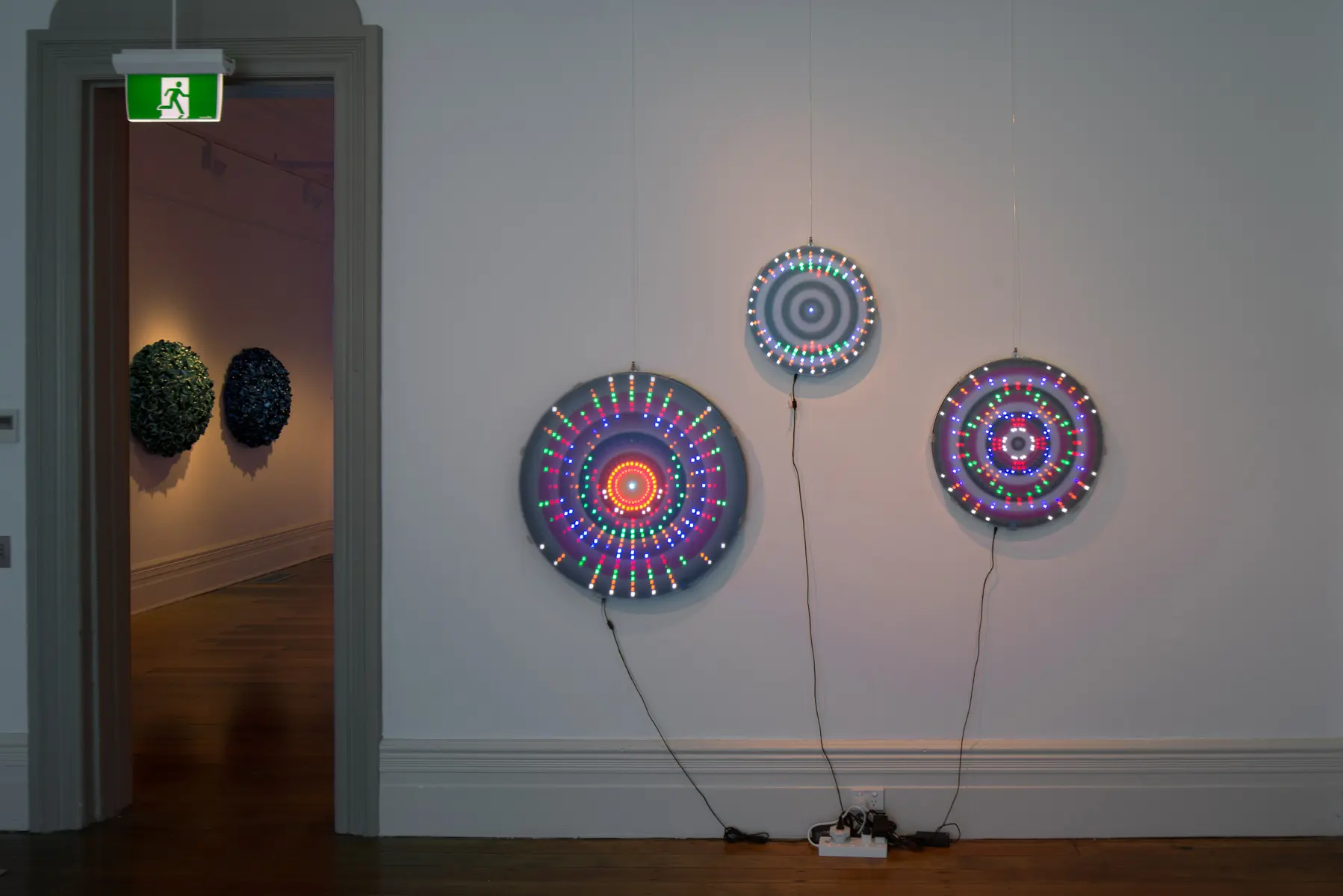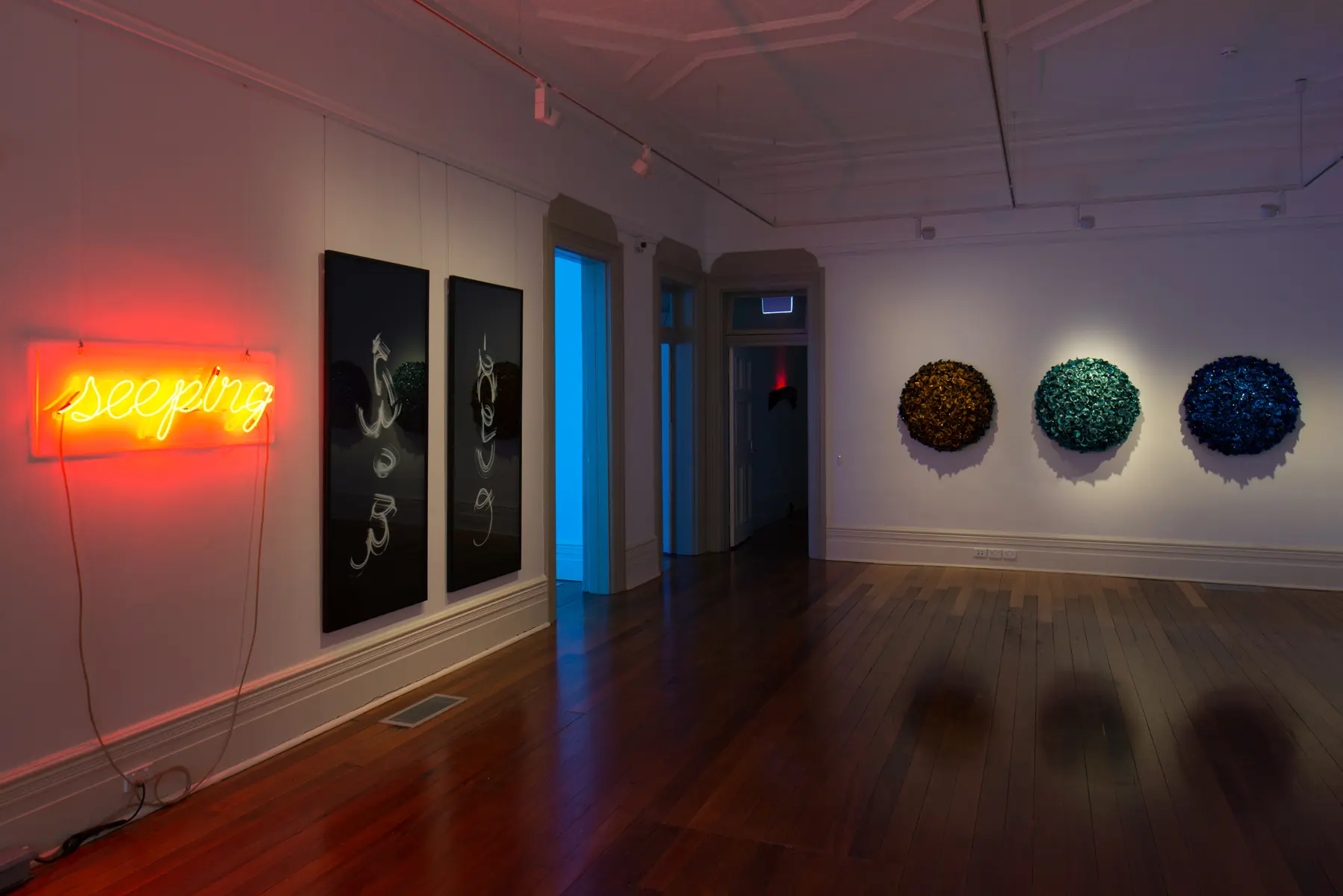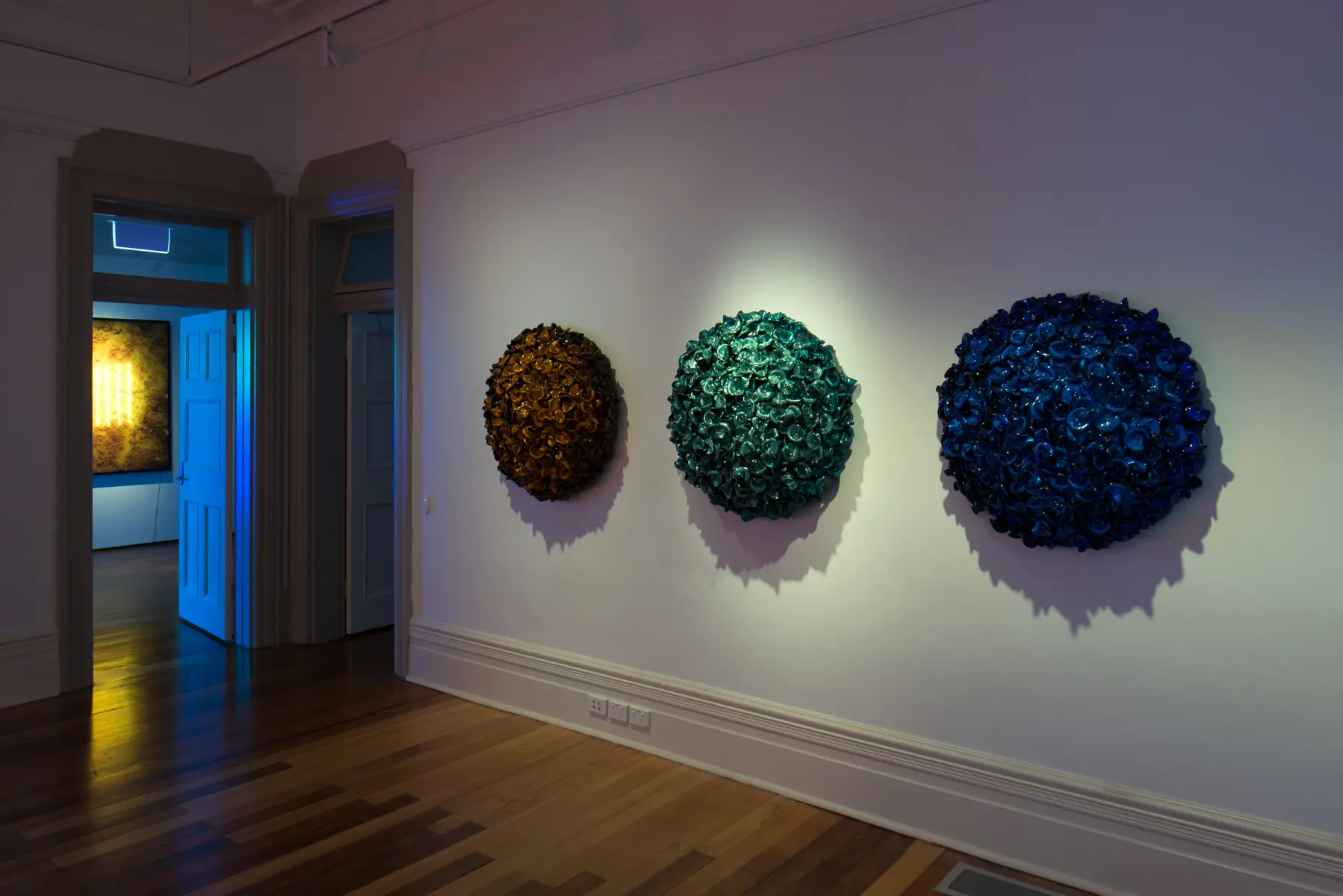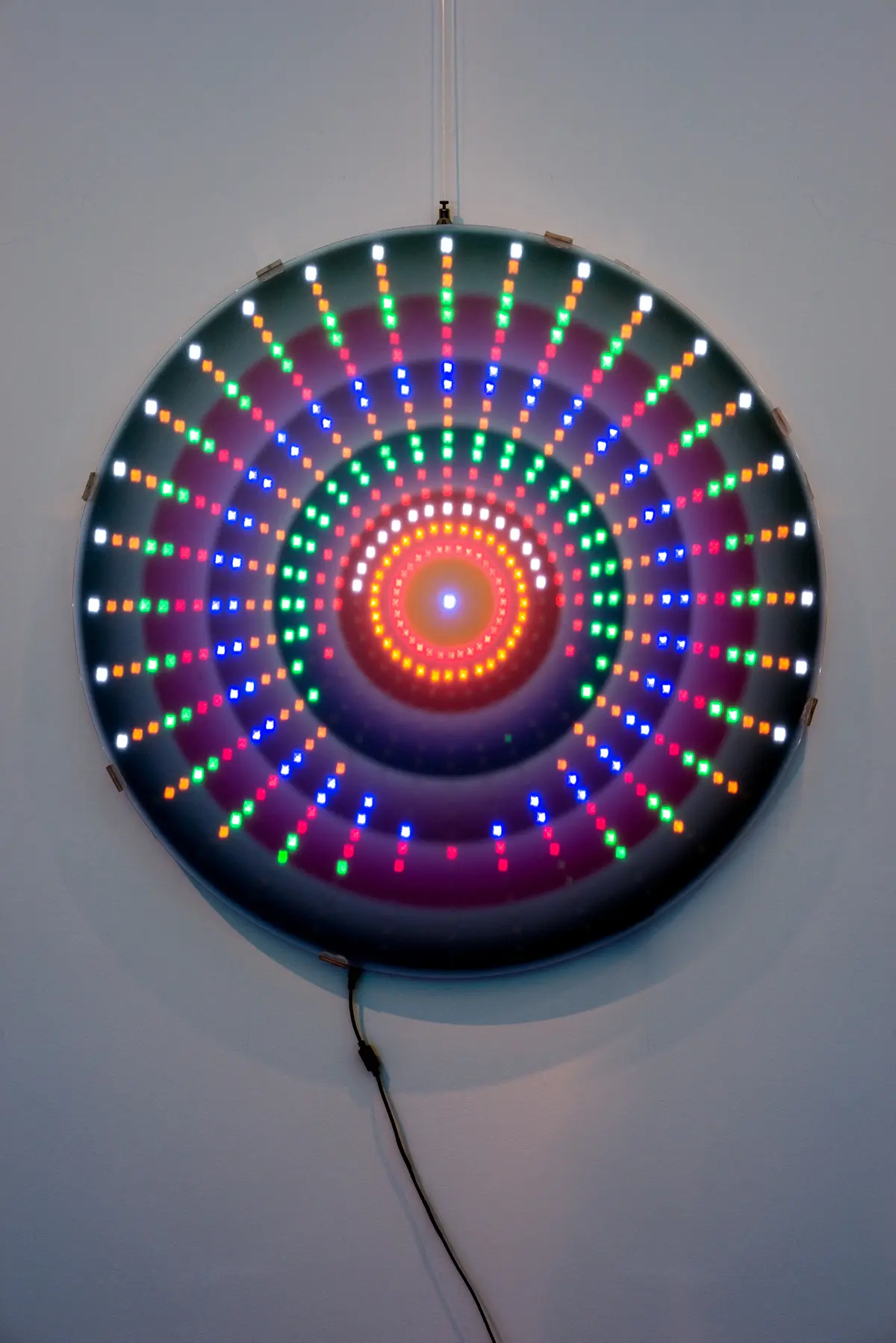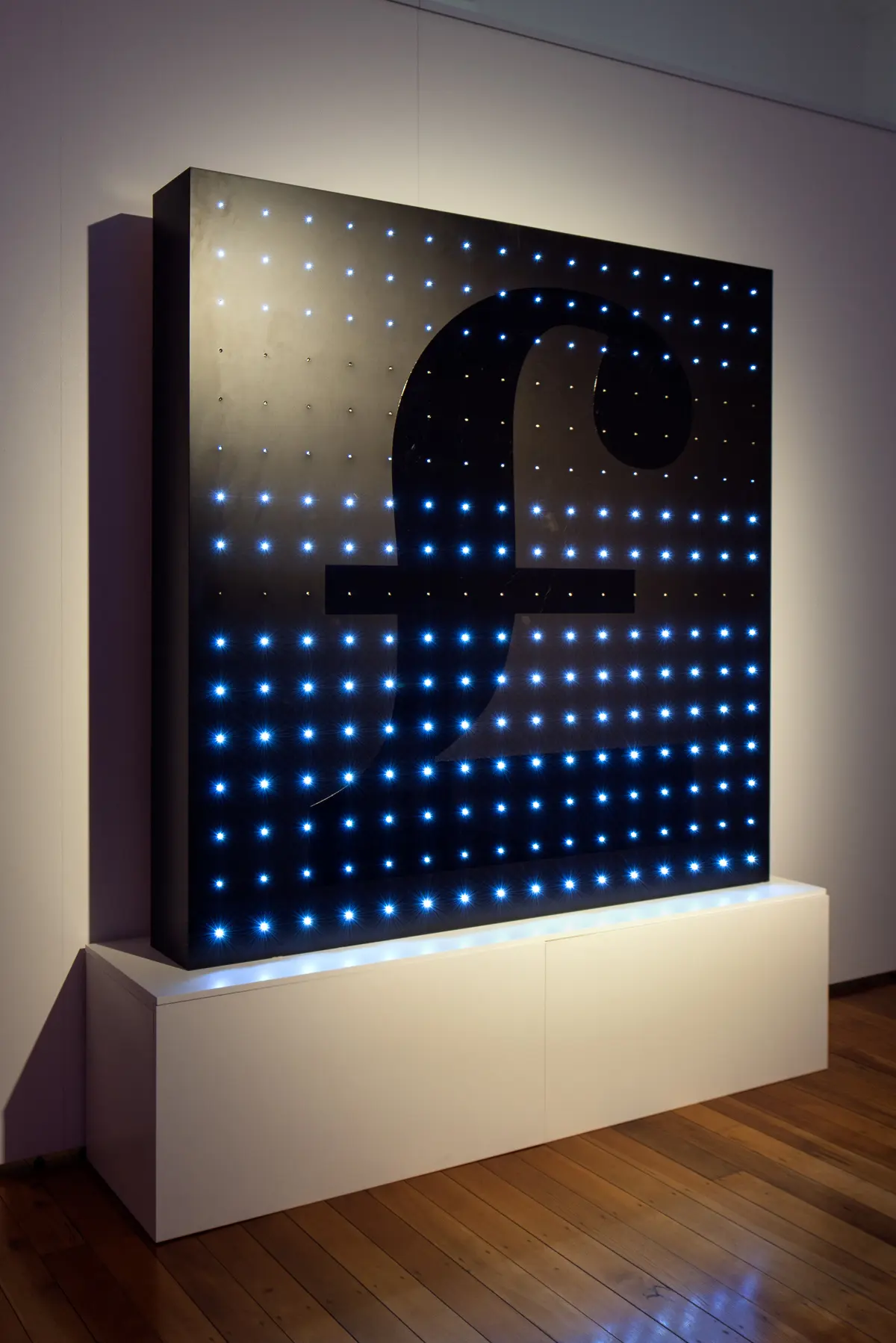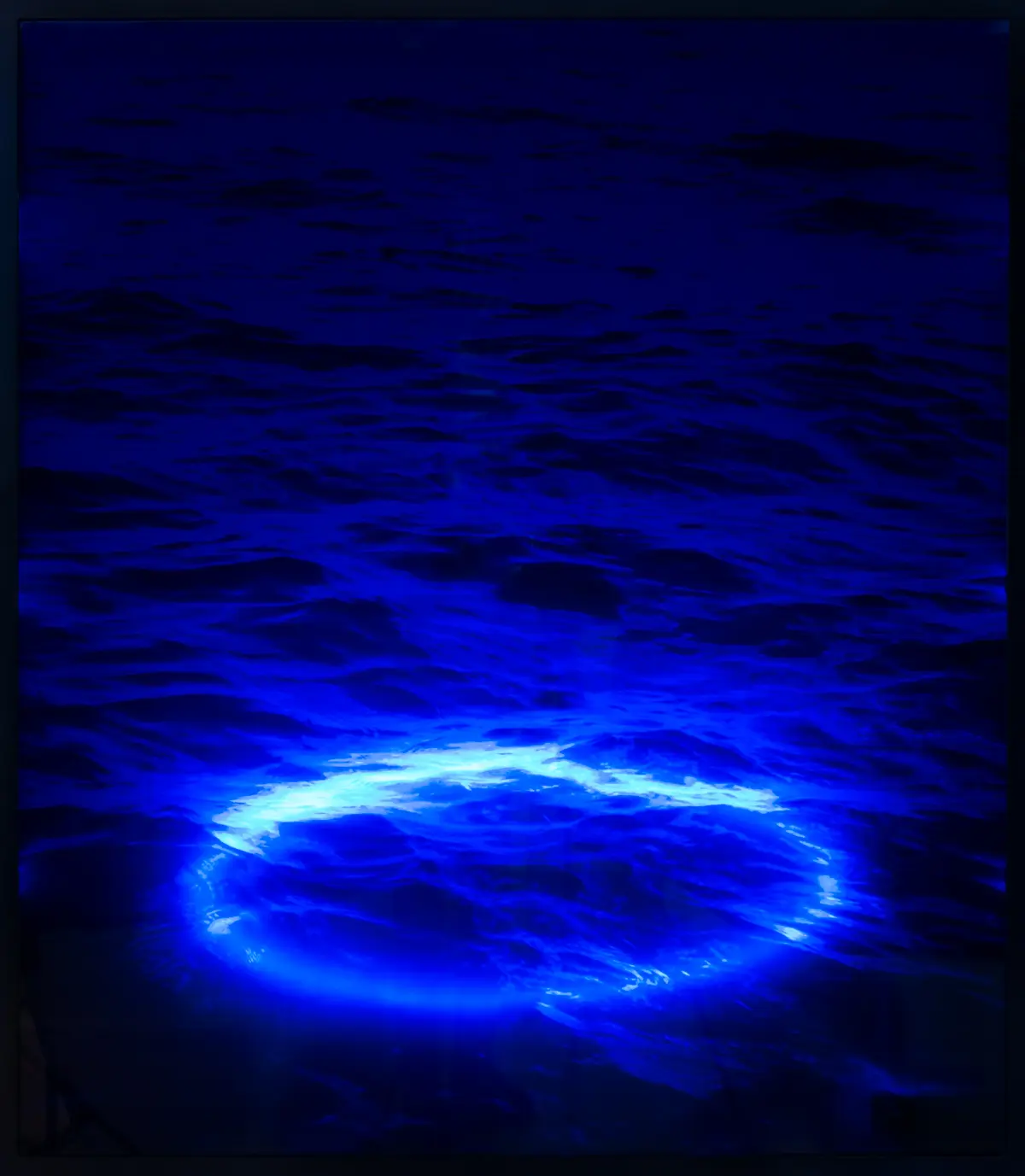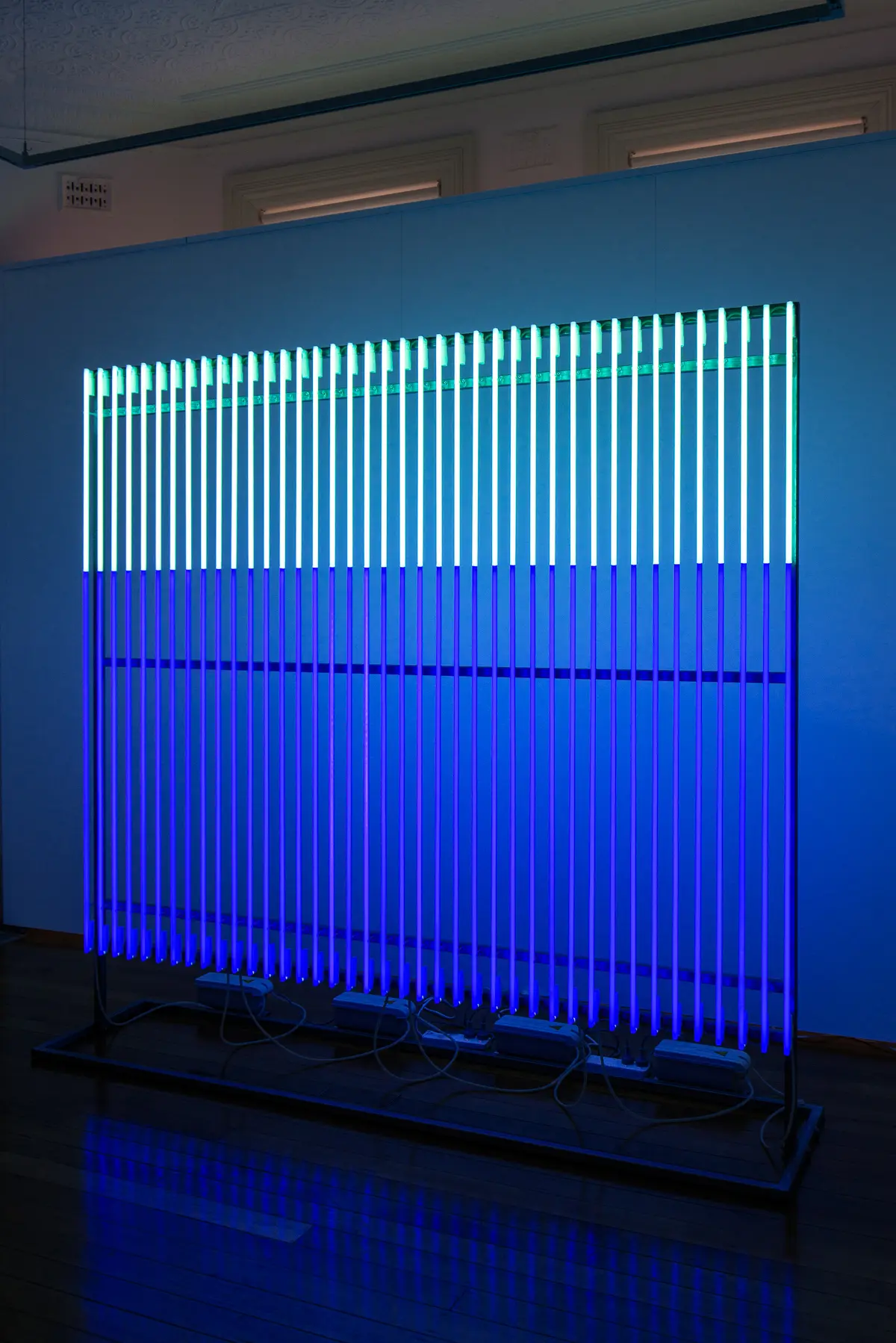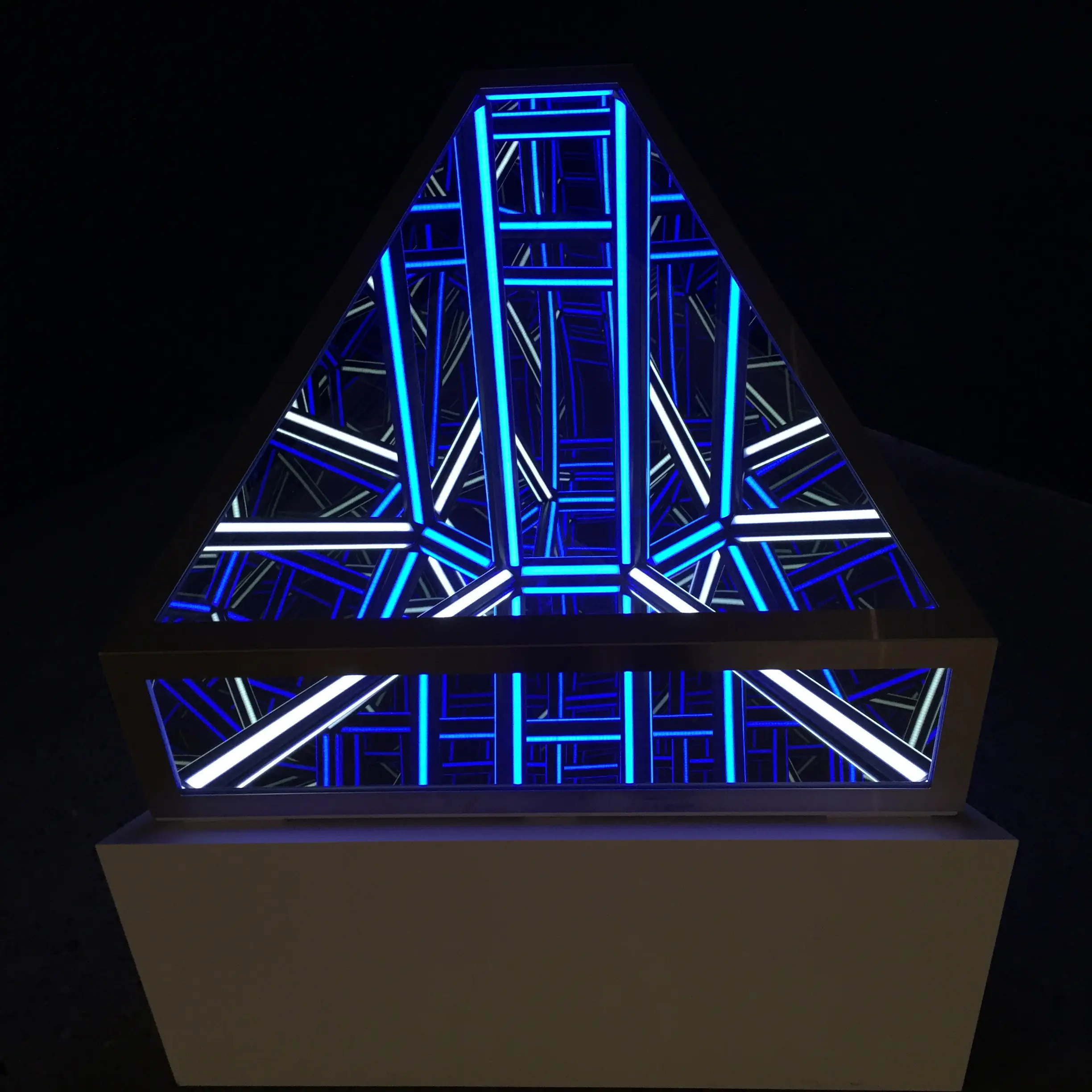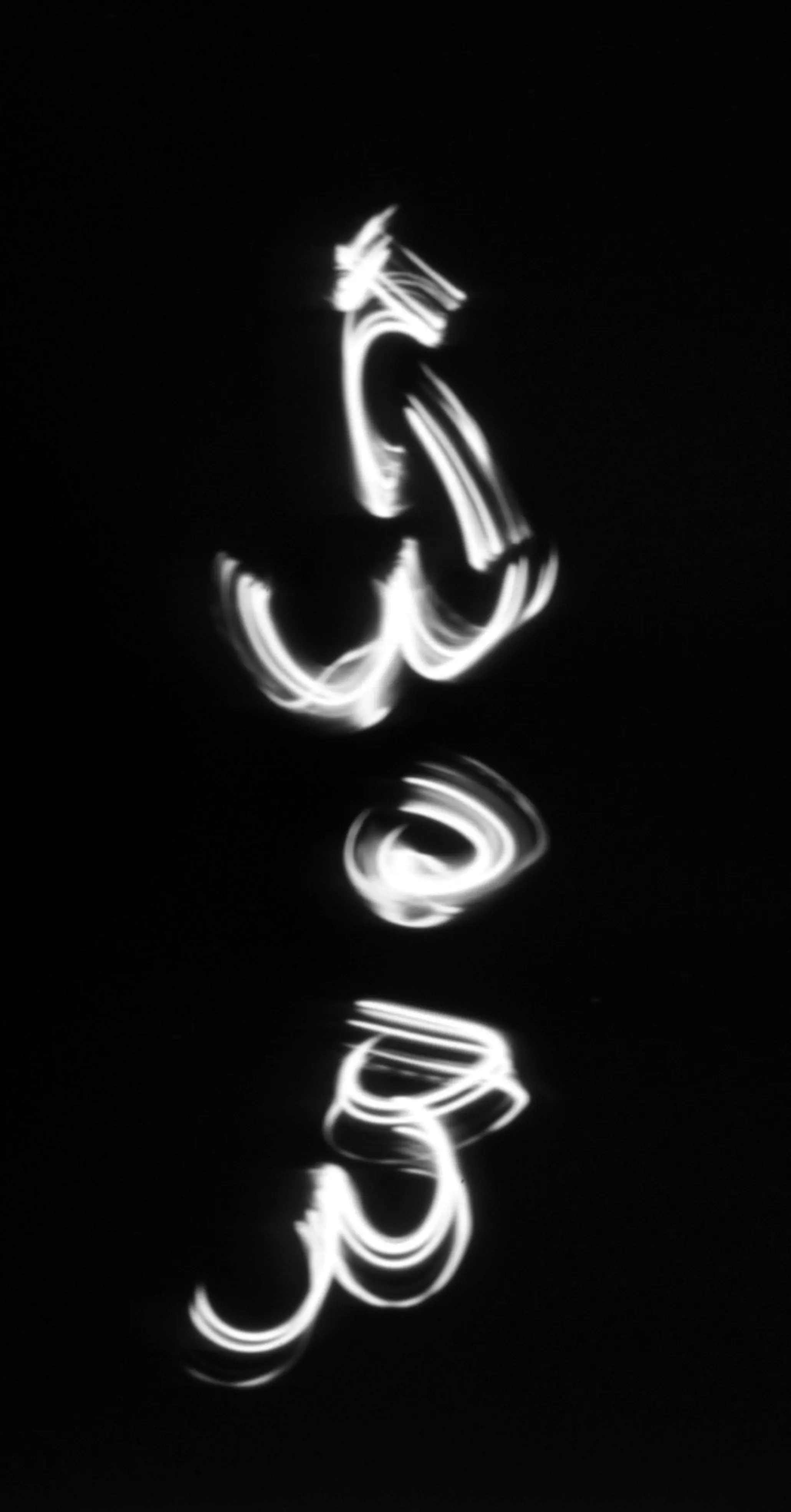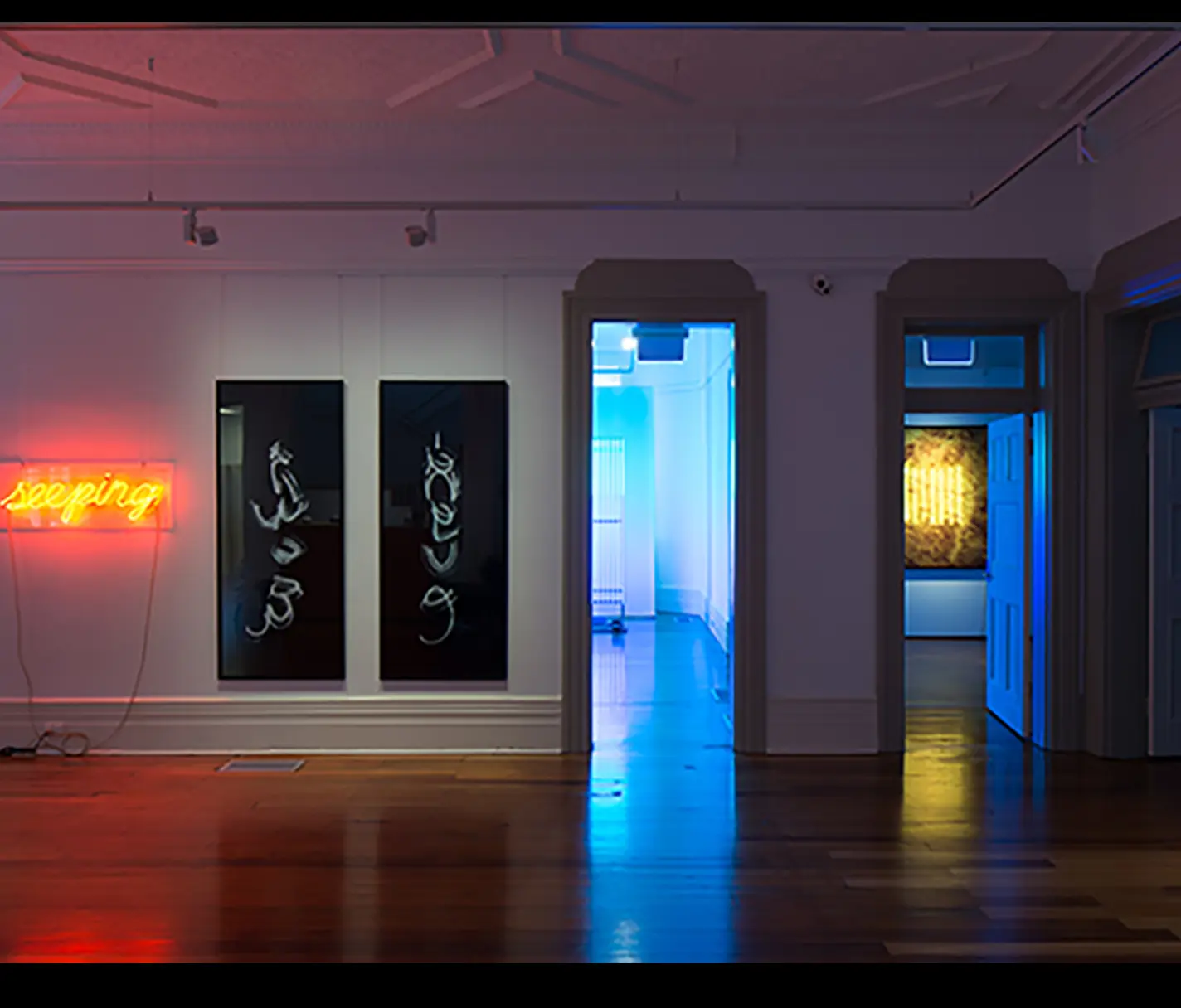
Incandescence
Incandescence
An exhibition responding to the materiality of light
1 June to 9 July 2016
Justin Henderson, Warren Langley, Cinnamon Lee, Tom Loveday, Dani Marti, Eugenia Raskopoulos, Giles Ryder, Jason Sims, Brendan van Hek and John Wright.
Curated by Lisa Jones
The word ‘incandescence’ refers to the emission of visible light and other forms of radiation from excited atoms.
Incandescence investigates the visibility of light, linking our direct sensory experience of the world with the invisible and imaginary world of physics.
It makes us feel light is real.
Incandescence juxtaposes artists who use a range of technical and industrial processes and devices that produce light and colour. Each artist has a personal way of using light to achieve interpretations that reflect aspects of our contemporary global culture; such as migration, the environment, economics and politics. These artists explore the endless possibilities of light, allowing artworks to create an illusion, an experience and an imaginary space.
Opening with Dominic Mersch 15 June 6-8pm.
(From 5-7pm, before the Incandescence opening, the GLOW light festival will be on in the school grounds. The buildings will be illuminated, orchestra, strings and vocal groups will perform, light sculptures, videos and photographs displayed and groups will have stalls with sausage sizzle, soup and glow items for sale).
| Related Resources | |
| Incandescence Media Release | Download PDF |
| Incandescence Catalogue | Download PDF |
| Incandescence Room Sheet | Download PDF |
Photographs copyright Richard Glover
Justin Henderson
Spoiler, 2015. Found objects play a significant role in Justin Henderson’s work. The spoiler is an automotive aerodynamic device. Its actual function as a car part is as much a sign of power as a physical enhancement. Mounted on a white wall it appears other worldly, a synthetic moth, a prayer object from an unknown cult or an abstract sculptural artwork. From under the glossy black form a pinky red glow of the brake light emits, and further produces, connotations perhaps part erotic and part ominous, everything had stopped for the moment.
Warren Langley
Closed System Ocean, 2016, and Closed System Wealth, 2016. Warren Langley works with light and glass in sculpture and architecture. Among his many commissions are public artworks for government and corporate clients. These digitally imaged glass and light constructions are from a series of works on the nature of closed systems. They use images of profound natural beauty embedded with geometrically closed lighting constructions to elicit comment on the fragility and delicate balance of our own planetary closed system. Represented by the Australian Galleries Sydney
Cinnamon Lee
Covert Jewels, 2015. Cinnamon Lee specialises in jewellery and lighting design practices. She works with 3D computer modelling and rapid manufacturing processes, in conjunction with traditional gold and silver smithing techniques, to produce work that explores the intersection between technology, the machine and the hand-made. In a world which seems to exercise largely extroverted displays of wealth, character and status, the Covert Jewels series pays tribute to the value of discretion by focusing on the intimate relationships that can exist between object and wearer, rather than onlooker.
Tom Loveday
Dark Matter, 2009. Tom Loveday is an academic and conceptual artist producing oil and acrylic paintings, installations, and videos. Dark Matter draws visual ideas from the standard currency symbol, the pound as well as the stock market signs in which share values are presented to the “floor.” The work frames this imagery, of the world of money and investment, as “Dark Matter” a substance invisible to science and yet which has been mathematically theorized as making up most of the matter in the universe. Represented by Conny Dietzschold Gallery
Dani Marti
Pointless, 2016. Dani Marti works across video, textile, installation and public art and his works address ideas about portraiture and sexuality in minimalism and geometric abstraction. The three works from the Pointless series are large woven circles incorporating customised corner cube reflectors and glass beads. They continue his work with the interlinking and weaving of images and fascination with industrial materials. Represented by Dominik Mersch Gallery, Sydney, ARC ONE Gallery, Melbourne and Greenaway Art Gallery, Adelaide
Eugenia Raskopoulos
Broken Tongue 1, 2002; Broken Tongue 3, 2002; Seeping, 1994. Eugenia Raskopoulos explores the margins of photography and video, synthesising performance, writing, drawing and installation. The work explores language as a visual form through its connection to gesture, writing, drawing and materiality. Through language, whether written or spoken, we can construct and deconstruct the definition of self. Her interest is in the pivot of the meaning of language, a place where language comes from the unconscious, where the unconscious speaks to us, where language becomes scrambled. Represented by William Wright Artists Projects, Sydney and ARC ONE Gallery, Melbourne.
Giles Ryder
Mandala for the Lost, (three works) 2015. Giles Ryder is known for his subtle installations that combine industrial materials in conjunction with the influences of modern life and its embedded cultural associations. He uses the hard, reflective surfaces of advertising and consumerism in coordination with pared back, geometric paintings. In the LED Mandala series he has worked with readymade light structures from Cambodia, traditionally found behind statues of Buddha in Khmer temples. He has layered Thai street vernacular with a minimalist aesthetic. He currently lives and works in Thailand and Australia. Represented by MARS Gallery, Melbourne.
Jason Sims
Diametric, 2015. Jason Sims is an Adelaide artist whose sculptural works inventively explore light and space. Diametric is a series of light boxes creating an immersive space and the illusion of a seemingly infinite void. These playful optical illusions draw the eye deeper and deeper blurring the space between reality and illusion. Represented by MARS Gallery, Melbourne.
Brendan Van Hek
Portable Horizon (aquamarine, midnight blue), 2015. Brendan Van Hek is a multidisciplinary artist whose practice largely spans sculpture, installation and drawing. Works produced in recent years investigate the potential of neon and mirror. Portable Horizon (aquamarine, midnight blue), 2015, is part of an ongoing series of works that focus on the idea of the horizon line as a point of illusion, fantasy and idealism. A perceived line that marks the illusory meeting point between sky and land or sea, the horizon is magnetic, intrinsically romantic and forever unattainable. We can easily lose ourselves in the fantasy of that unattainable place. Represented by Sarah Cottier Gallery, Sydney.
John Wright
Sea of People, 2014. John Wright is a sculptor with a preference for drawing in space with steel and wire but his work in Incandescence shows him drawing in space with light. Sea of People is constructed from acrylic, catching the sunlight during the day and at night illuminated by LED lights. The life-size figures have a mysterious presence and absence.

